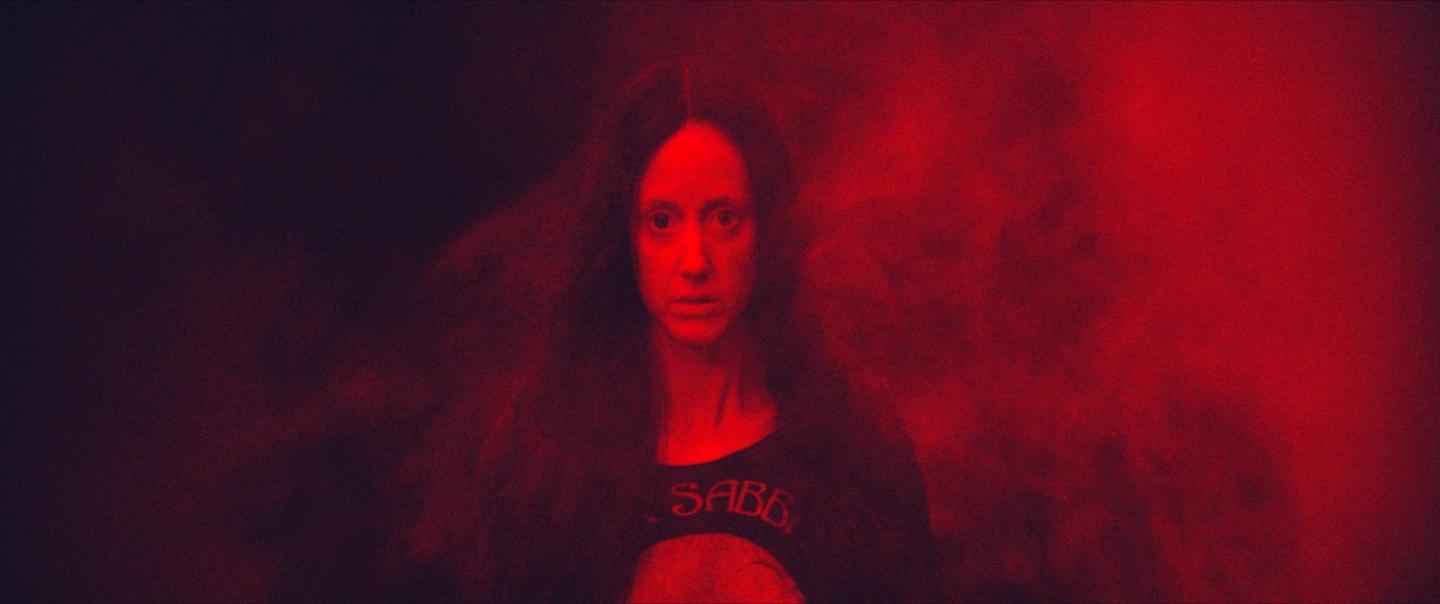Director Panos Cosmatos directed one feature film before Mandy, 2010’s Beyond the Black Rainbow. George P. Cosmatos, Panos’ dad, directed Rambo First Blood Part II and Tombstone, among other well-received Hollywood blockbusters.
Currently, Panos’ Wikipedia page is six sentences long. But the 44-year-old son of a successful director appears to be making really strange and exciting movies that will definitely bring on a fervent fan base.
Mandy is many things. The film works intelligently to be convincing, taking time to build itself as something recognizable (in terms of genre and stylistic conventions) before it immediately backs over itself in a way that seems to change the film’s direction a number of times throughout the film. It would take a watching of Beyond the Black Rainbow to try and pin what Cosmatos is actually going for. A viewing of Mandy alone will impress upon the viewer a sense that this film is definitely trying to be something unique.
The first part of the film (decided by chapter titles) is an interaction between otherworldly lighting and long, slow shots with minimal dialogue, creating a sense of impending horror.
Given that tainted LSD is an important (although not prevalent) incitement in Mandy, as well as the attention to light patterns and colours, and prog-rocky soundscapes, the film is more interested in creating a mood than a story. Even so, Mandy’s narrative, although deranged, is coherent. As the film transitions out of its first act, the horror is realized; shortly thereafter, and after a several minute scene of Nick Cage darn well near freaking himself into anger-induced psychosis, the true madness of the film ensues.
In talking about Mandy, it’s not worth wasting time with a synopsis. If you plan to see the film, you don’t want to know anything about it. And if you don’t, the plot is really just a vehicle for Cosmatos’ hypnotic and composite revenge flick.
Part of what makes the film captivating is that Cosmatos appears to be drawing from a half-dozen or so of his favourite directors, though it’s not apparent why. Mandy doesn’t try anything particularly new or controversial, but it is stylistically ambiguous. Is this an homage to his favourite directors? Is it a cover album of others’ best hits? To elaborate:
Multiple closeups (inserts) of what appear to be mythical/magical artifacts (“the horn of Abraxis,” for one) are framed with intense flashing green light (not in any prior or subsequent shots of the scene) and an ominous rushing wind (suddenly inside a hotel room). These are most likely conditioned out of Cosmatos’ respect for luminary director David Lynch. Additionally, in Mandy, dreams don’t play a plot-influencing role, certainly not as unknowable and unconscious representation like in Mulholland Drive; however, Mandy points to dreams through short comic-style animations that separate very surreal and horrific sequences from relatively calm ones. But these scenes don’t appear to make a statement about themselves so much as they say, “Look at me, I’m referencing dreams.”
Cosmatos sets the viewer up to interpret some kind of dream world, and it’s not clear why. Though it could be seen as negligence, it should be taken in context of the film’s aforementioned prioritization of mood. The same explanation would satisfy comparison to the full range of assembled techniques.
I’ve noticed that many reviews of Mandy compare Cosmatos to either Lynch, Tarkovsky, or Cronenberg. Perhaps they mean to imply (by means of referencing the most accessible and popular unconventional filmmakers) that Mandy isn’t a conventional Hollywood film. Or maybe they noticed the very obvious use of techniques made famous by past directors. Either way, comparing Cosmatos to these others isn’t very helpful in analyzing his work.
As mentioned, it will take a reading of Beyond the Black Rainbow and whatever else Cosmatos creates next to really determine what’s going on in Cosmatos’ world.
Mandy attempts so many things it’s difficult to pin it down, but that doesn’t stop it from being a visceral experience. It is enjoyably a proper thriller, regardless of anything else it may or may not be doing.


